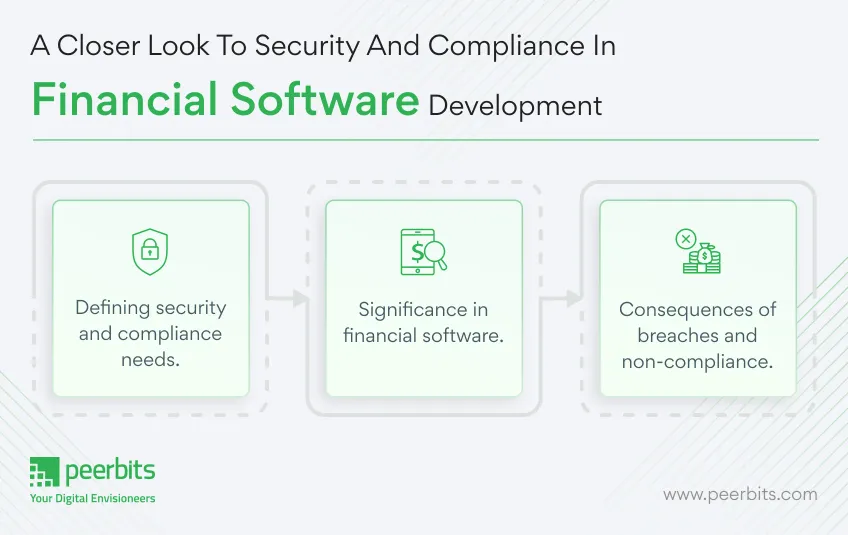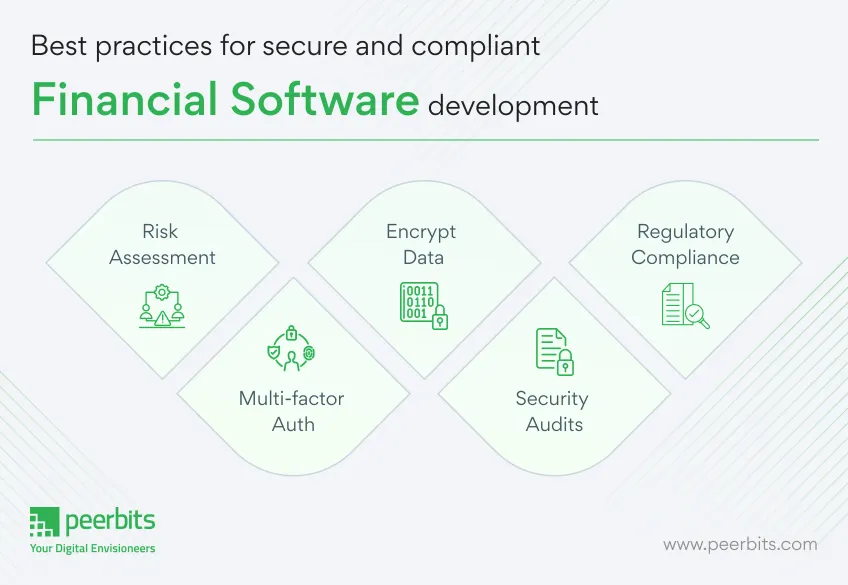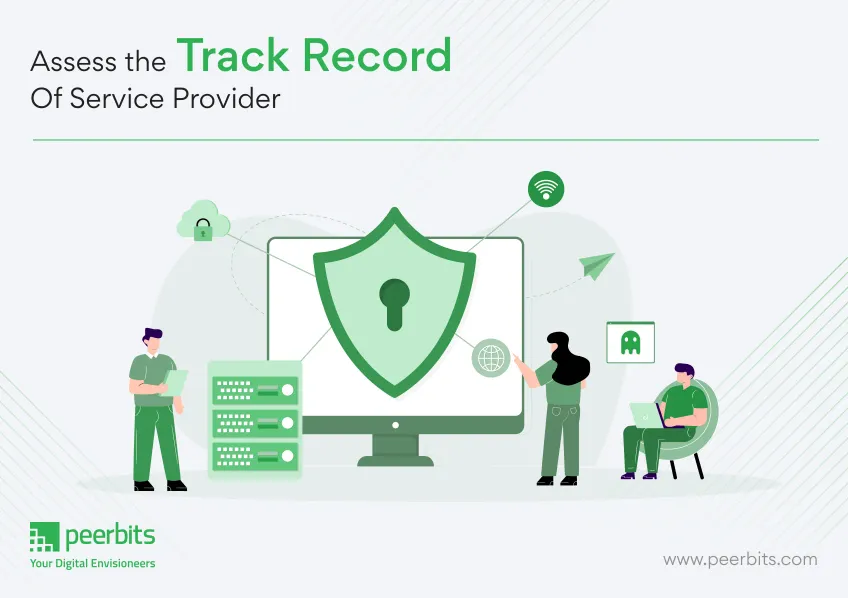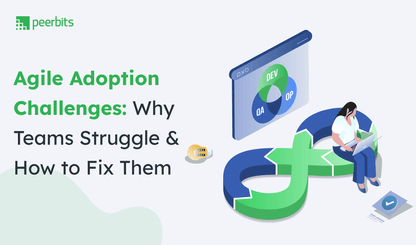As Warren Buffett once said, “It takes 20 years to build a reputation and five minutes to ruin it.” That reality hits hardest in the financial industry, where a single breach can lead to long-term reputational damage, regulatory heat, and heavy financial loss.
According to IBM’s 2024 report, the global average cost of a data breach has reached $4.9 million, the highest ever recorded. One in three breaches involved shadow data, showing how the rapid expansion of digital platforms is making data harder to track and protect.
On the brighter side, companies using security AI and automation extensively saw average savings of $2.2 million per breach.
In such a high-stakes environment, financial software development demands more than just clean code and scalable architecture. It requires a security-first mindset and strict alignment with regulatory standards right from the start.
This blog explores the key practices that help financial firms build software that stays compliant, protects sensitive data, and reduces risk without slowing down innovation. Let’s start with the risks you need to watch out for early in the process.
Defining security and compliance in Financial Software Development

In financial software development, security refers to protecting software and data from unauthorized access, modification, or destruction. It involves implementing measures such as encryption, access control, and intrusion detection to prevent security breaches.
Compliance, on the other hand, refers to adhering to laws, regulations, and industry standards related to financial software development. Compliance measures may include regular audits, risk assessments, and adherence to specific standards such as the Payment Card Industry Data Security Standard (PCI DSS) or the General Data Protection Regulation (GDPR).
Significance of security and compliance in the Industry
The financial industry is highly regulated, and financial institutions have a responsibility to protect the sensitive information of their clients. Any security breach can result in significant financial losses, reputational damage, and legal liabilities.
Moreover, non-compliance can lead to hefty fines, legal penalties, and damage to the institution's reputation. As financial institutions continue to adopt new technologies due to this digital era and customers’ evolving demands, the risk of security breaches and non-compliance is increasing. And this fast technology adoption is making it even more critical to prioritize security and compliance measures.
Potential consequences of security breaches and Non-Compliance
Security breaches can result in data theft, financial fraud, and disruption of business operations. These breaches can cause significant financial losses, legal liabilities, and damage to the institution's reputation.
Non-compliance can result in fines, legal penalties, and loss of customers' trust. In extreme cases, non-compliance can lead to the revocation of the institution's license to operate. Therefore, financial institutions must prioritize security and compliance to mitigate these potential consequences.
Best practices for security and compliance in Financial Software Development
When it comes to building fintech software, ensuring security and compliance is crucial. There are several best practices that financial institutions can follow to protect their software and data from potential security breaches and non-compliance. But not all are praised by the experts nor are beneficial for financial app development.
Hence, below we have mentioned 5 best practices (experts' favorite), for security and compliance in financial software development and provide examples where applicable.

Conducting thorough risk assessments
To identify potential vulnerabilities in financial software, it's essential to conduct thorough risk assessments regularly. These assessments should evaluate the likelihood and potential impact of various security threats and provide recommendations for addressing these risks. Tools like PowerDMARC's domain analyzer.
For example, a financial institution could conduct a risk assessment to identify vulnerabilities in its online banking platform and take steps to address any weaknesses.
Implementing multi-factor authentication
Multi-factor authentication is a security measure that requires users to provide more than one form of identification to access sensitive data.
For example, financial institutions could implement a system that requires users to provide a password and a one-time code sent to their phone via SMS to access their account. This extra layer of security can prevent unauthorized access to sensitive data and reduce the risk of security breaches.
Encrypting sensitive data
Encryption is the process of converting data into a coded language to protect it from unauthorized access. Financial institutions should implement encryption protocols for sensitive data, such as personal information, account numbers, and transaction data.
For example, a bank could use end-to-end encryption to protect their customers' transaction data from potential breaches.
Did you know that: When sharing sensitive information, 63% of consumers consider an organization's data collection and storage practices as the most important factor.
Conducting regular security audits and Penetration testing
Regular security audits and penetration testing can help financial institutions identify potential security weaknesses in their systems and take corrective action before they are exploited. These audits can involve internal and external assessments and provide recommendations for improving security.
For example, a financial institution could hire a third-party security firm to conduct a security audit and penetration testing on its systems.
Maintaining regulatory compliance
Financial institutions must adhere to regulatory standards and guidelines to ensure compliance. These standards can include PCI DSS, GDPR, and others specific to the financial industry. Compliance involves implementing appropriate security measures, regularly monitoring systems, and conducting audits to ensure adherence to these standards.
For example, a bank must comply with the Anti-Money Laundering (AML) regulations to ensure their customers are not involved in any illegal activities.
By implementing these practices, financial institutions can protect their assets, reputation, and customers from potential harm.

Guidelines for achieving security and compliance in Financial Software Development
In today's world, where technology plays a crucial role, cybersecurity in fintech cybersecurity-in-fintech-challenges-and-solutions.html should be the top priority. Plus, the development of secure and compliant financial software has become paramount. Failure to adhere to security and compliance guidelines could lead to dire consequences such as loss of data, reputational damage, legal issues, and financial losses.
Therefore, it's crucial to establish clear policies and procedures for security and compliance. Here, you will explore the guidelines in detail.
Identify and prioritize compliance requirements
To ensure the development of secure and compliant financial software, it's crucial to identify and prioritize compliance requirements. This includes legal, regulatory, and industry-specific requirements.
For instance, if your financial software will handle personally identifiable information, it must comply with data protection regulations like GDPR or CCPA.
Establish clear policies and procedures for security and compliance
Establishing clear policies and procedures for security and compliance is vital to ensure that employees follow the right protocols. This includes defining access controls, data handling, incident response plans, and regular security audits.
A good example is creating a password policy that requires strong passwords, regular password changes, and two-factor authentication supported by an open source password manager to simplify secure credential management across teams.
Train employees on security and compliance protocols
Training employees on security and compliance protocols is crucial to ensure that they are aware of the risks and the importance of following the right protocols. This includes training on how to identify phishing emails, how to handle sensitive data, and how to report security incidents.
For instance, conducting regular security awareness training sessions can help employees recognize and avoid phishing scams.
What the CyberEdge Group report reveals:
- 82% of organizations experienced at least one cyberattack
- 63% were targeted by ransomware attacks
- Only 54% of ransomware victims recovered data after paying
- Security budgets are rising by just 4.3%, the slowest growth since 2021
- 84% prefer AI-powered security tools
- 98% plan to boost identity security and threat detection
- 90% work with MSSPs, mainly for Managed Detection and Response (MDR)
Monitor and report on security and compliance activities
Monitoring and reporting on security and compliance activities are crucial to ensure that policies and procedures are followed. This includes conducting regular security audits, penetration testing, and vulnerability assessments. Regular reports should be generated and shared with stakeholders to ensure transparency and accountability.

We discussed each guideline in detail. And if you follow each of them rightly, you can build secure and compliant software that protects data and meets legal and regulatory requirements.
Read more: Potential security threats for mobile financial solutions with guaranteed fixes
Conclusion
In conclusion, security and compliance play a critical role in the success and reputation of any finance company. Adhering to security and compliance guidelines is vital to avoid financial losses, legal consequences, and reputational damage.
Security and compliance play a major role in the long-term success and reputation of any finance company. Failing to meet required standards doesn't just invite regulatory action. It also leads to customer distrust and financial damage that can take years to recover from.
When you plan your next financial software development project, it’s strongly recommended to partner with a financial software development company that brings domain-specific expertise and follows proven software development methodologies. Ask if they follow the practices mentioned above, as it reflects their readiness to build secure, audit-friendly systems.
By doing this, you protect both your business and your users, meet legal and regulatory expectations, and develop software that supports long-term growth in a competitive and high-stakes industry.









